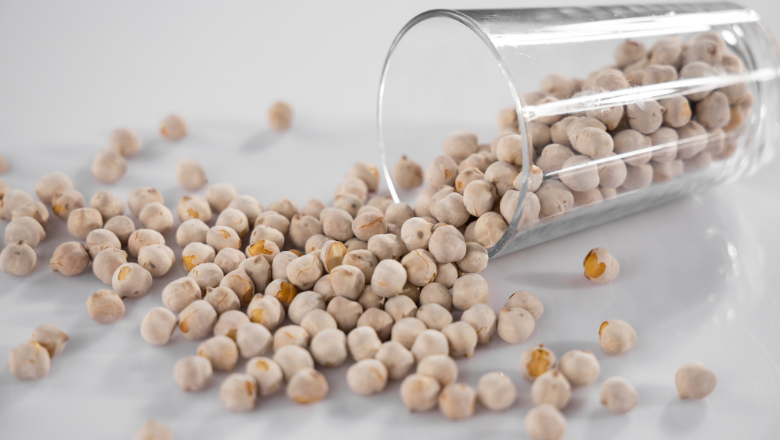We were impressed with the results we’ve seen in healthy individuals, and now would like to see how our cellular chickea flour bread can help in the management of body weight or diabetes in larger scale dietary intervention trials with people who suffer with these conditions.
First author Dr Balazs Bajka, Lecturer in Nutritional Sciences
10 February 2023
Bread made from cell pulse flour keeps you fuller for longer
Bread made from a new type of whole cell pulse flour can lower blood glucose (sugar) levels and keep you fuller for longer, new research has found.

Research published recently in The American Journal of Clinical Nutrition by researchers from the School of Life Course and Population Sciences and the Quadram Institute looked at the effects of replacing regular wheat flour with ‘cellular chickpea flour’ on feelings of fullness, fullness-regulating hormones, insulin and blood sugar levels in people who ate it.
The study is the first of its kind and is based on the design of a new pulse ingredient that is now being commercialised for food industry use as PulseON® by Pulseon Foods Ltd.
Eating healthy pulses including chickpeas, lentils and beans is known to help support healthy weight maintenance and decrease the risk of heart disease. A lot of the benefits seen from these foods are due to the fibre structure of the pulses themselves, with normal flour milling generally considered to reduce the beneficial effects of fibre structure.
However, new methods in food technology developed by the scientists have allowed them to make whole cell flours that preserve the dietary fibre structure of the whole pulses, providing a new way to enrich flour-based food with beneficial nutritional qualities for improved health.
Scientists found that adding the whole cell chickpea flour to bread significantly increased the release of satiety signals from the gut to the brain, meaning people felt fuller after eating the enriched bread.
The bread that was 30% cellular chickpea flour reduced blood glucose levels by as much as 40% compared to the regular white wheat flour bread. The authors have shown that this effect is due to the slower breakdown of the starch in the cellular flour during digestion.
The results from this study show a simple switch to a cellular chickpea blend in commercial bread recipes can improve feelings of fullness, which in turn may potentially help to avoid overeating. The addition of cellular chickpea flour, which causes a lower spike in blood sugar levels, could also contribute to a lower risk of obesity and type 2 diabetes.
Incorporating cellular chickpea flour into starchy staple foods could bring these beneficial effects to a range of products designed to help prevent or treat diet-related conditions such as type 2 diabetes.
As this study was carried out with healthy people, more research is needed to show whether regularly eating these new foods made with cellular chickpea flour can help in the management of healthy body weight or diabetes, and the researchers now want to set up larger scale trials to test this.
Dr Cathrina Edwards from the Quadram Institute and senior author of the paper said “We have long known that the structure of food can have a big impact on its nutritional value. This study is a promising example of how new ingredient structures can be used successfully to improve the metabolic and fullness effects of everyday food products. We hope that our findings will attract interest from food producers looking to improve the health credentials of their products.”
At a time that we are all being encouraged to increase our fibre intake, this study highlights the importance of the physical form of fibre, as intact cell walls, in slowing starch digestion, improving blood glucose levels and simulating satiety hormones to help us feel full.
Professor Peter Ellis, Professor of Carbohydrate Biochemistry
The study was funded by the Biotechnology and Biological Sciences Research Council, part of UK Research & Innovation.
Reference: Enhanced secretion of satiety-promoting gut hormones in healthy humans following consumption of white bread enriched with cellular chickpea flour: A randomized crossover study.
Balazs H. Bajka, Ana M. Pinto, Natalia Perez-Moral, Shikha Saha, Peter Ryden, Jennifer Ahn-Jarvis, Alice van der Schoot, Catherine Bland, Sarah E. Berry, Peter R. Ellis, Cathrina H. Edwards
The American Journal of Clinical Nutrition DOI: 10.1016/j.ajcnut.2022.12.008



